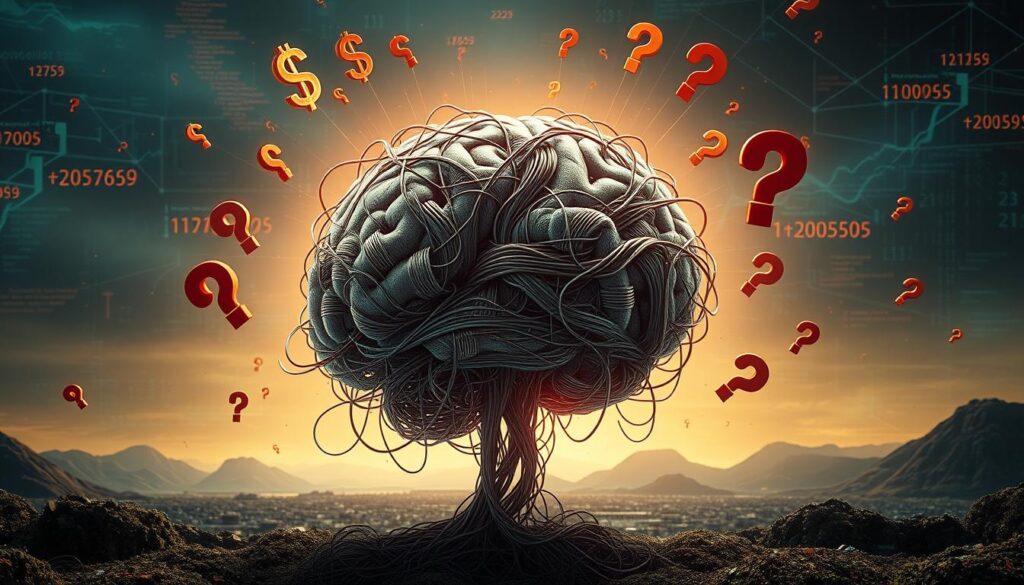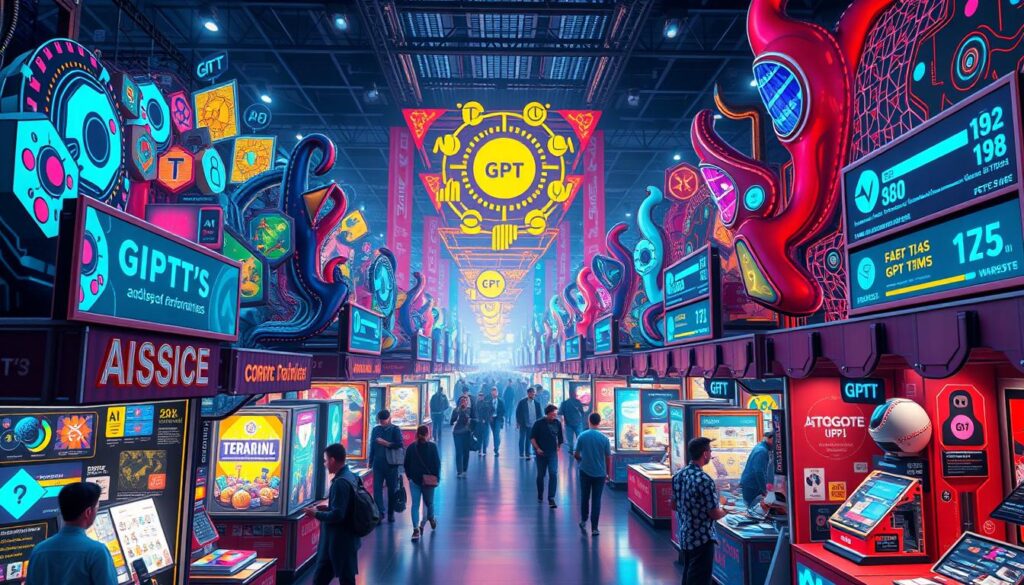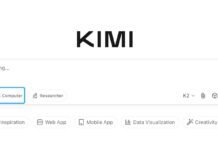In a world where creativity meets technology, GPT creators face a big question: do they get paid? They put their time, knowledge, and passion into making Generative Pre-Trained Transformers (GPTs). These tools could change the market. With over 180 million ChatGPT users and about 250,000 Plus subscribers, there’s a big chance to make money through the GPT Store1.
But, the question of how much they can earn is still unclear. This makes many wonder if they can make a living in this digital world.
The GPT Store lets creators show off their work. But making money is not easy. OpenAI plans to share some of the revenue with creators, but the details are still unknown2. It’s important to know if this system can turn creativity into a steady income.
Some creators might make around $12,000 a year, which shows the potential is huge1. But, it’s also a challenge in this growing market.
As the GPT Store grows, it’s key to look at how much creators can earn. It’s also important to see the challenges they face. What does it mean when your work can reach millions but you don’t get a steady income? This question goes beyond just how the GPT Store pays creators. It’s about understanding the changing world of technology and how it affects earnings.
Understanding the GPT Store
The GPT Store is a big step forward in AI marketplaces. It lets creators share and make money from their custom GPTs. It started on January 10, 2024, and helps users make money with AI, no matter their tech skills.
Overview of the GPT Store
Over 3 million custom GPTs have been made for the GPT Store. It wants to make AI tools available to everyone. It’s for people of all skill levels, making AI easy to use without coding.
This change makes the AI marketplace more exciting for both creators and users.
How the GPT Store differs from traditional app stores
The GPT Store is different from regular app stores. It values how users interact with AI, not just downloads. This means creators get paid based on how well their AI works, not just how many times it’s used.
This makes the GPT Store a better place for creators to earn money based on their AI’s success1.
Initial launch and features available
When it first started, only users with OpenAI’s premium plans could join. These plans include Plus, Enterprise, and Team. The GPT Store lets creators make money directly, which is a new idea in the digital world.
This approach is made for the AI community. It shows the GPT Store as a leader in the AI vs. app markets debate.
The Role of GPT Creators
GPT creators are key in the world of generative AI. They are often AI developers, entrepreneurs, and hobbyists. They use OpenAI’s tech to make many different apps. They work hard to find new ways to make money in the GPT Store.
Who are the creators of GPTs?
Creators of GPTs come from all walks of life. They include tech experts and creative people. They all want to use customizable AI for new things. A big community has formed, where they can work together, share ideas, and improve their projects.
What types of GPTs can be created?
Developers can make many kinds of GPTs. They can create educational tools or fun apps for certain groups. They can even make apps that connect to APIs for more features3. Plus, they can add special files to make their apps stand out3.
Potential Earnings Through Revenue Shares
The GPT world is growing, offering creators a big chance to make money. OpenAI plans to share revenue with creators, using a pool of $1.3 billion. This way, creators can earn based on how much their models are used by subscribers4.
This change means creators will get paid based on their model’s success. It’s a move towards paying creators for their work’s performance5.
Overview of revenue sharing mechanics
The GPT Store will have special ways to share revenue. Models that are popular and useful will make more money. Creators can also make money on other platforms, improving their monetization strategy6.
Estimated revenue share percentages for creators
Creators might get 10% to 20% of the money made by their models4. This might seem less than what other stores offer. But, the GPT Store’s unique setup and use of OpenAI’s resources make these rates necessary5.
These percentages show the creative and varied ways creators can earn. They can use GPTs for business needs and more6.
Do GPT creators get paid?

The world of GPT creators is changing fast. It’s key to know how they get paid now. Many are waiting for OpenAI to start sharing revenue, which could be a big win. But, creators are also trying new ways to make money, like subscriptions and small payments.
Creators who make money often start with a free trial. This trial lets users try out 8 messages for free. It helps attract people who might pay later7.
Current compensation methods for GPT creators
Looking into how creators get paid shows both ups and downs. For example, those who know what questions are popular can make money from answers7. But, getting users to pay monthly can be tough because of the chat’s interactive nature. So, creators must find new ways to keep users interested and make money7.
The chatbot market is growing fast, with a value of about $6,311.7 million. It’s expected to grow even more, offering hope for creators looking to make money8.
Is revenue sharing a feasible income source?
Revenue sharing is a big topic for GPT creators. But, many worry that without more paying users, earnings might not be enough. To make more money, creators are working on keeping users engaged, like through email and apps7.
The GPT store is set to launch in January 2024. This will bring more developers into the game, making it harder to make money. Creators face challenges in keeping users interested as competition grows9.
Monetization Strategies for GPT Creators
Creating a good monetization plan is key for GPT creators wanting to make money. Subscription models are a top choice for making money from GPTs. They let users get extra features or better performance for a fee.
By offering different subscription levels, creators can meet various user needs. This also helps them get a steady income from users who keep using their GPTs.
Subscription models and their implementation
Subscription models are great for setting GPT prices. They let creators offer different levels of access. For example, some creators use monthly subscriptions, but they might not always break even10.
Another good idea is a pre-paid micropayment system. Users buy credits to use a GPT, which makes money for the creator with each action10. This way, users can choose how much access they want, which can keep them engaged and help creators make money.
Using affiliate marketing and paid actions
Affiliate marketing is another way to make money from GPTs. Creators can add affiliate links in their responses. But, this might break platform rules11.
Paid actions in the GPT can also be a way to make money. Users can pay for special features or functions. But, creators must tell users how it works and get their okay to follow privacy laws like GDPR11.
“Improving developer incentives is vital for fostering innovation and sustainability in the GPT ecosystem.”
Challenges Faced by GPT Creators

In a highly competitive landscape, the competition in the GPT Store adds several layers of difficulty for creators. With over 3 million GPTs available, many original creators find their work overshadowed by popular copies of their ideas. This market saturation not only diminishes visibility but also favors more powerful creators who often capitalize on the innovative concepts of others12. As the trend of viral ideas spread rapidly across platforms like TikTok and Instagram, creators note that this often leads to a shift in user interaction toward the more popular versions of their work12.
High competition among GPTs
Creators face numerous creator challenges when attempting to navigate this saturated marketplace. Despite having access to data from only 10,000 chats, there is a pressing need for more comprehensive insights to enhance their strategies and improve engagement rates. The current constraints limit how well creators can analyze their reach and performance13. Furthermore, concerns about potential replication of ideas by OpenAI amplify these challenges, leading to uncertainty around monetization13.
Low engagement rates affecting creator earnings
A particularly troubling aspect of low user engagement results in decreased creator earnings, as revenue models heavily rely on active usage. Only a small fraction of GPTs manage to engage users effectively, which directly impacts their earning potential. Moreover, the lack of integration options and detailed insights from user interactions hinders the ability of businesses to deploy GPTs efficiently in real-world applications14. These limitations pose significant obstacles for creators striving to cultivate a dedicated user base while ensuring that their hard work translates into viable returns.
Despite the clear challenges, the landscape remains dynamic, urging creators to adapt quickly to maintain relevance and profitability in this evolving market. The need for rightful recognition and financial sustainability continues to be a pressing issue for many121314.
Insights from Active GPT Creators
Members of the GPT community share their ups and downs. They talk about the challenges and how to overcome them. They also discuss the latest in generative AI trends, helping each other find success.
Creators stress the value of working together. They believe in learning from one another. This teamwork is key to their growth.
Experiences shared by creators in the community
About 100% of creators talk about making money from GPT plugins15. But, only 50% can charge users directly for plugins15. This leads to discussions on other ways to earn.
Around 25% of creators use affiliate links to make money15. Another 25% are looking into services to make money from GPT plugins15. This shows creators are finding new ways to earn despite the challenges.
What successful creators are doing differently
Successful creators listen to what users say. This helps them improve their work. About 75% of creators question OpenAI’s way of making money15.
They have different ideas on how to share earnings. Some suggest hourly pay or a percentage of profits15. This shows they care about fair earnings. By doing things differently, they build a loyal following.
Future of Earnings for GPT Creators
The world of GPT creators is changing fast. They are looking at the future of revenue sharing closely. OpenAI is working on a new way to share money, which could help creators earn more.
Right now, only a tiny fraction of GPT creators make money from their work. Maybe 0.001% or less earn from 1,000 chats16. A better plan could help many more people in the community.
Potential changes in the revenue sharing model
There’s talk about making the revenue-sharing system better. Some think it could be like the Apple App Store’s 70–30 split with developers. OpenAI might give a small part of subscription fees to creators17.
The ChatGPT Plus subscription costs $20 a month. Creators might get 1–2% of that, showing how little they can earn17.
Expected growth in the GPT Store market
The GPT Store market analysis suggests a big increase in users soon. This will be because of better features and more fun interactions. With over 3 million GPTs already, the competition is tough17.
Creators face challenges like competition and keeping their projects running smoothly. They also worry about the planet’s energy use, which is expected to grow a lot by 206016.
Community and User Engagement
User engagement is key for GPT creators’ earnings. ChatGPT plans to start a revenue program for U.S.-based creators. They will get paid based on how much users interact with their GPTs618.
This strategy helps creators who get more user attention. Those who create unique tools are more likely to draw in users618.
How user engagement impacts earnings
Since customizable features were introduced, nearly 3 million GPTs have been made. This shows a lively community that grows with user interaction19. The top GPTs offer special solutions or improve user experiences in new ways18.
Creators who talk to users and improve their GPTs attract more people. This boosts their earnings from the GPT Store6.
Conclusion
The world of GPT creators is changing fast, with both big chances and big hurdles. OpenAI made over $2 billion in December 2023, thanks to ChatGPT’s success. The GPT Store is a great way for creators to make money from their work20.
But, it’s key to know how much you can earn and deal with competition and getting people to engage. Many creators face problems because not enough people are interested and there’s a lot of competition21.
The future of making money with generative AI depends on being able to change and connect with your community. OpenAI wants to make it easier for users to create their own GPT versions22. With 100 million active users, creators have a huge chance to reach people, but making content that matters is essential22.
In short, while there are ways to make money like pay-per-use and subscriptions, it’s vital to stand out and tackle common issues and biases21. As the field expands, those who are open to new ideas and listen to their community will likely lead the way.
FAQ
Do GPT creators get paid?
What is the GPT Store?
How does the GPT Store differ from traditional app stores?
Who are the creators of GPTs?
What types of GPTs can be created?
What can creators expect regarding revenue sharing mechanics?
What are the estimated revenue share percentages for creators?
Are there current compensation methods for GPT creators?
Is revenue sharing a feasible income source for creators?
What monetization strategies can GPT creators utilize?
What challenges do GPT creators face in the marketplace?
What insights do active GPT creators share about their experiences?
What distinguishes successful creators in the GPT Store?
What is the expected future of earnings for GPT creators?
How does user engagement impact earnings for creators?
Source Links
- How do GPT Builders make money?
- GPT Store – Everything You Need to Know to Make Money
- OpenAI Just Released The GPT Store. Here’s How To Use It And Make Money With Your GPT
- 4 Ways to Make Money From Your Custom GPTs (Before The Official GPT Store Opens)
- How To Make Money With GPT Store?
- How to generate passive income through the GPT Store
- How these GPTs made their first $100 in revenue
- Chat GPT Store Monetization: How to Be Paid Using GTP Store
- How To Make Money In 2024 Using ChatGPT’s GPT Store
- Has anyone successfully monetized their custom gpt?
- How to Monetize my Custom GPT’s
- The Challenge, and Opportunity, of OpenAI’s GPT Store
- Problem 2: Failure of GPT Store (monetisation) · ChatGPT: Anticipating Business Risks | Strategies for Success
- The GPT Store is NOT for business use. Here is why ..
- Exploring Ways to Monetize Free ChatGPT Plugins
- GPTs discussion – Can you really make money?
- ChatGPT Store Earnings Exposed: This is How Much You Can Make
- How Will I Get Paid For My GPT in the GPT Store? – phill.ai
- OpenAI’s GPT Store to monetize personalized AI systems
- What Is ChatGPT, and How Does It Make Money?
- Make Money with ChatGPT: Your Guide to GPT Store in 2024
- OpenAI ChatGPT Opens The Door For You To Make Money By Easily Devising Income-Producing GPTs Based On What You Know Or What Others Want To Know







